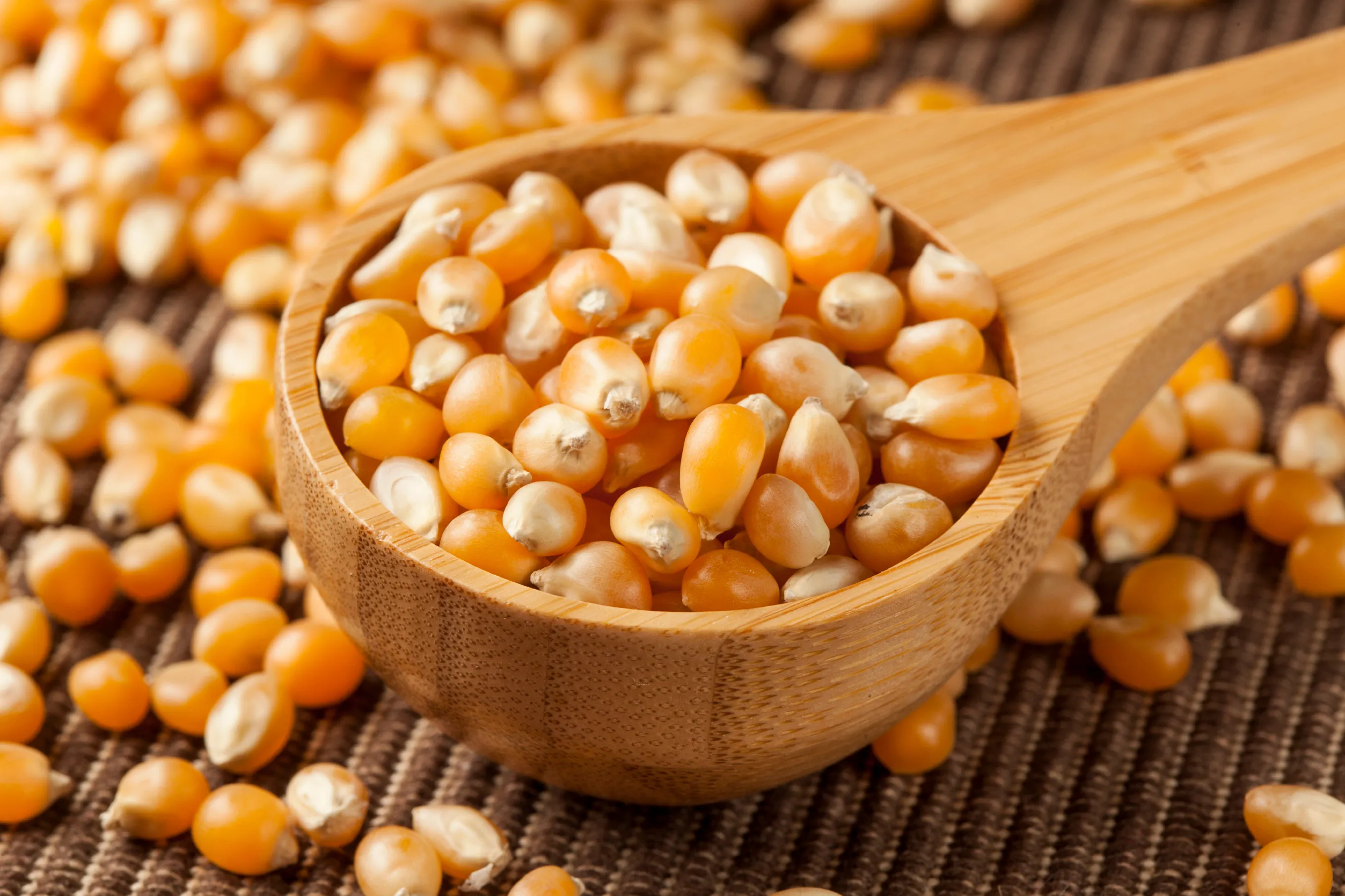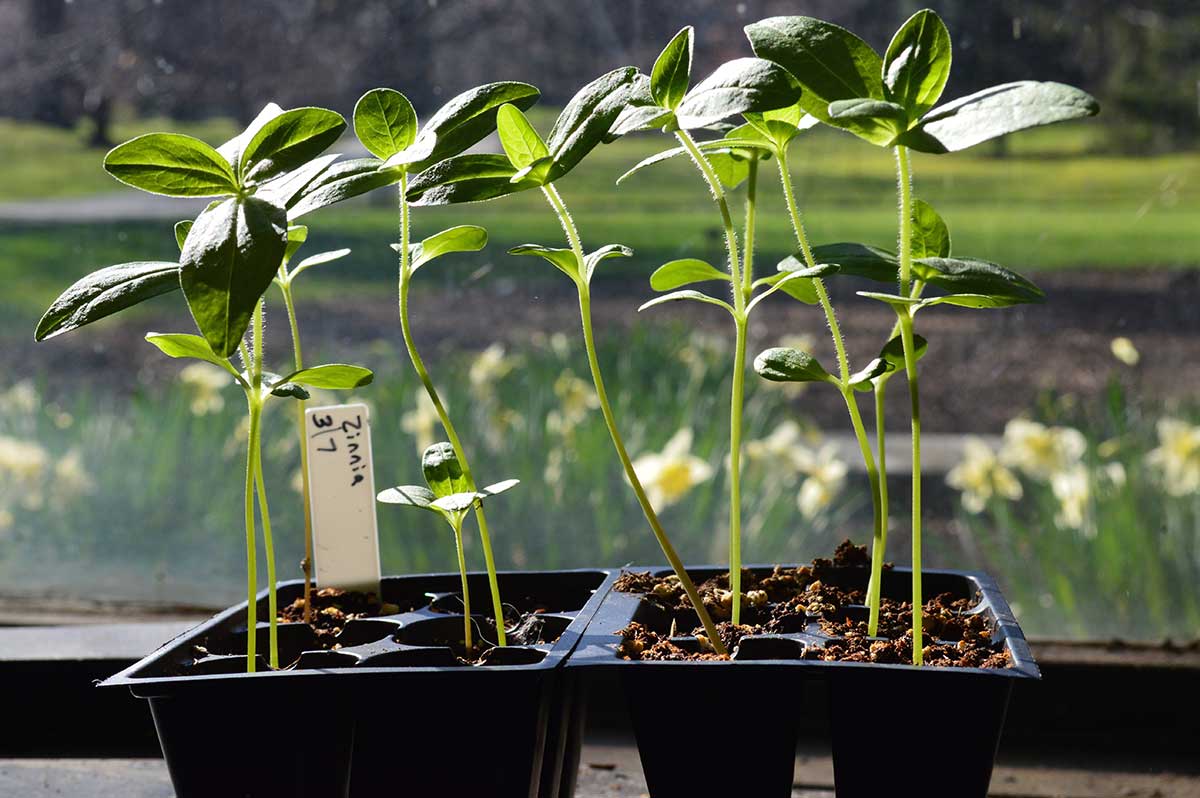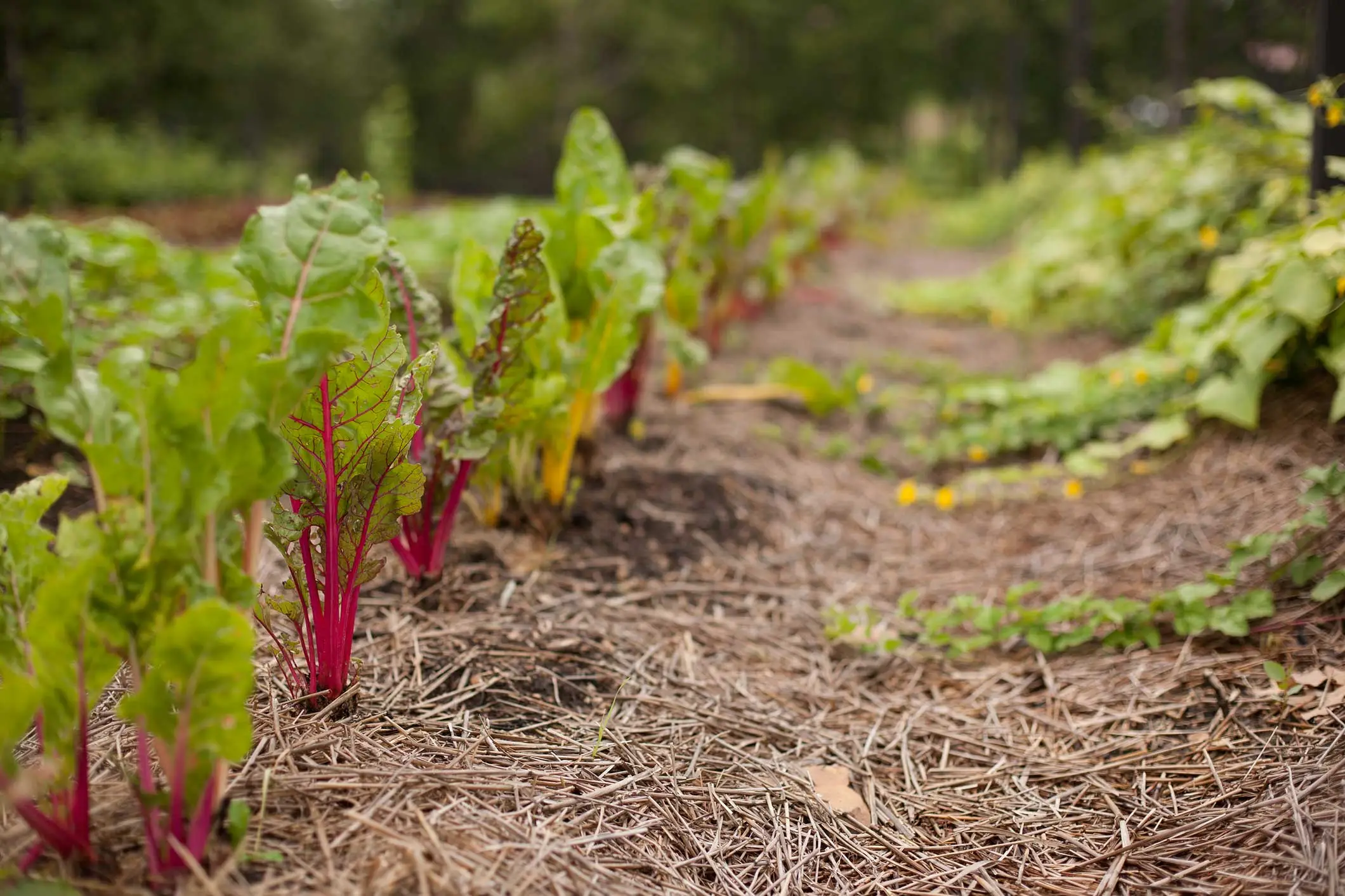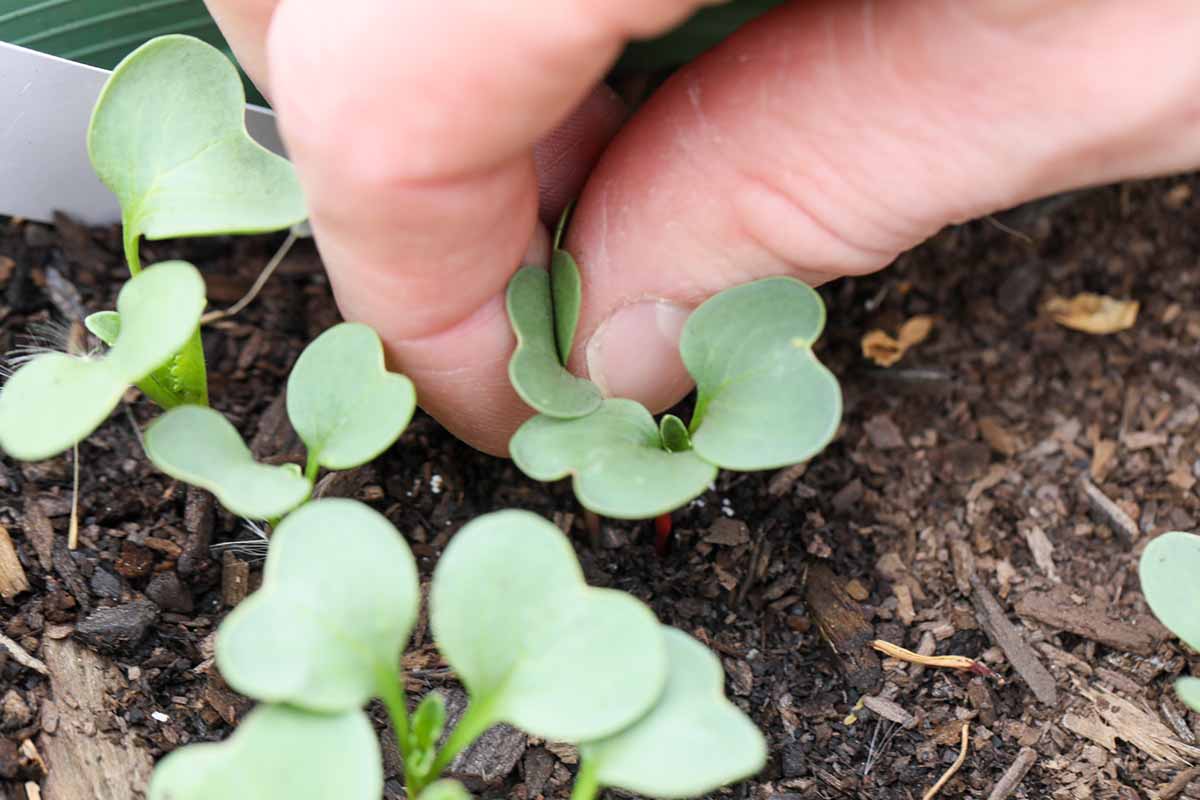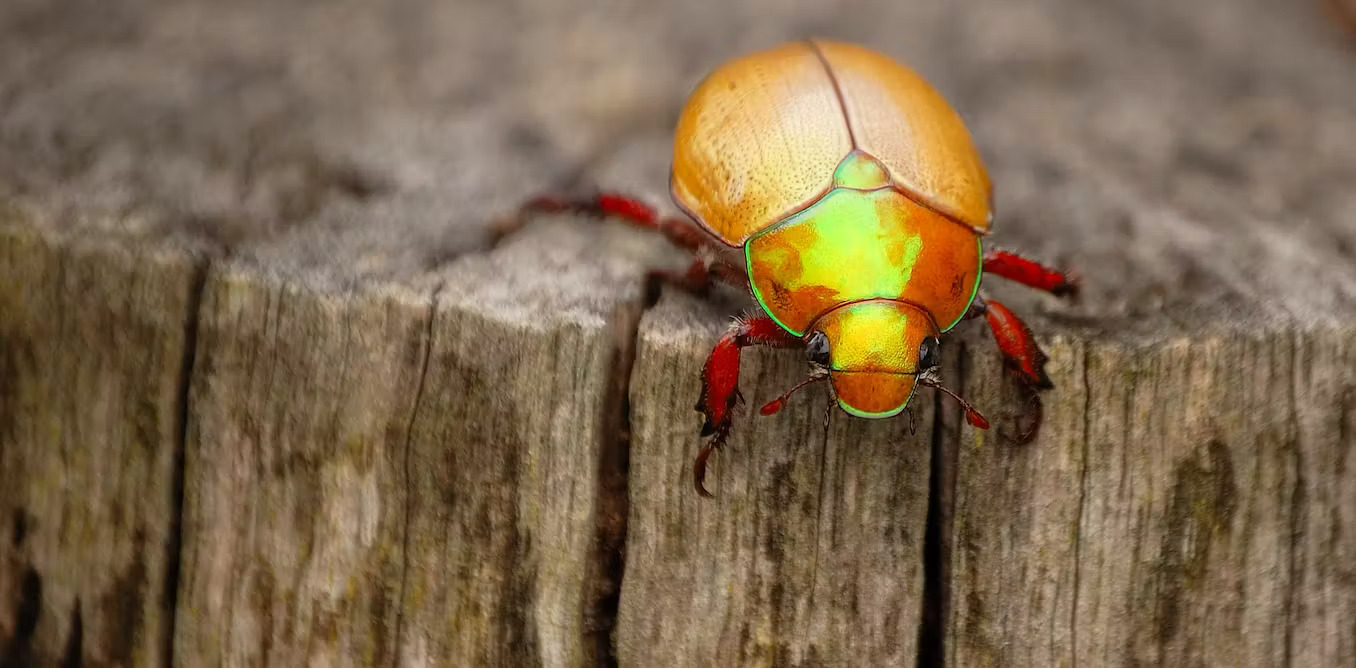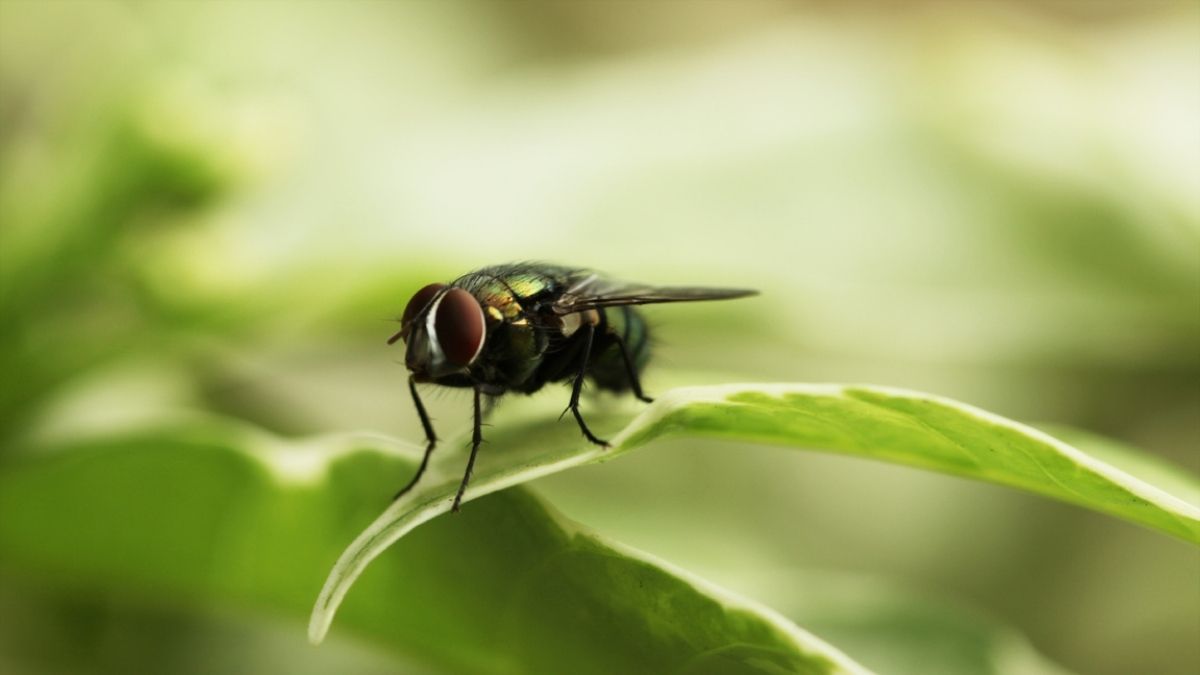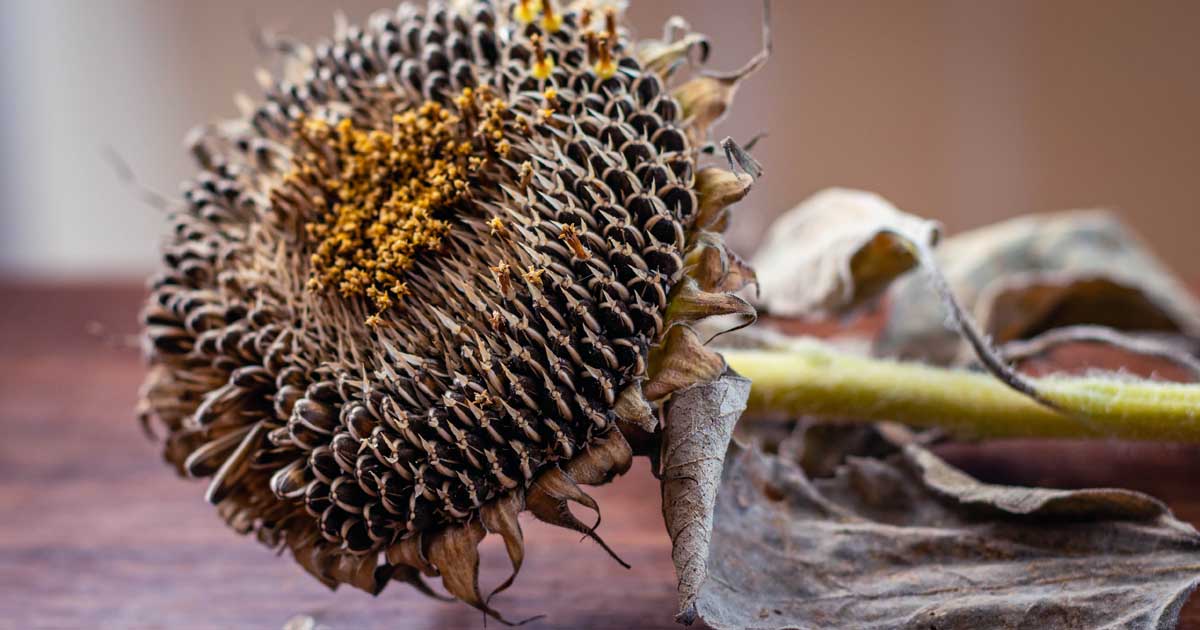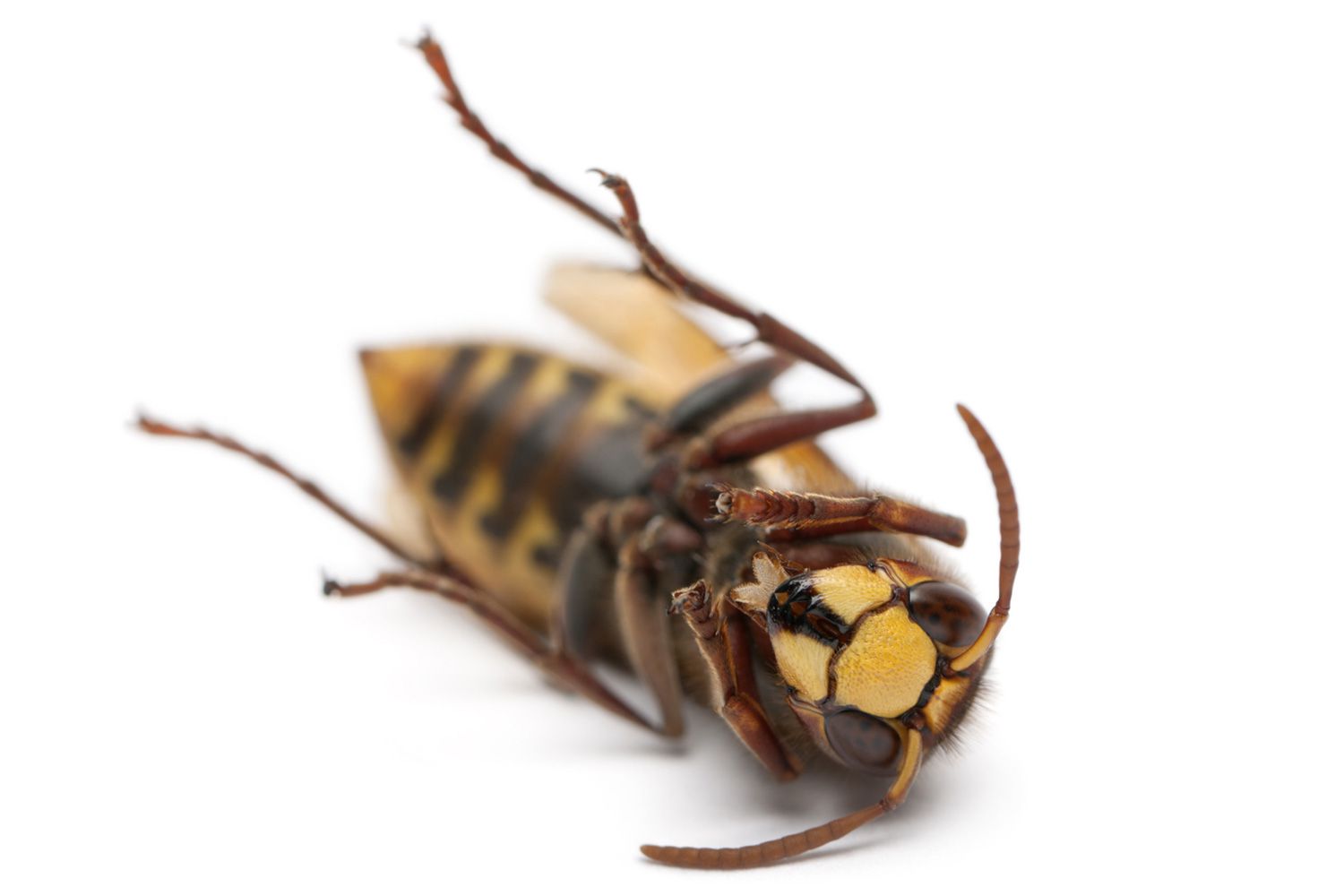Home>Gardening Techniques>Seasonal Gardening>When Do Insects Come Out In Spring
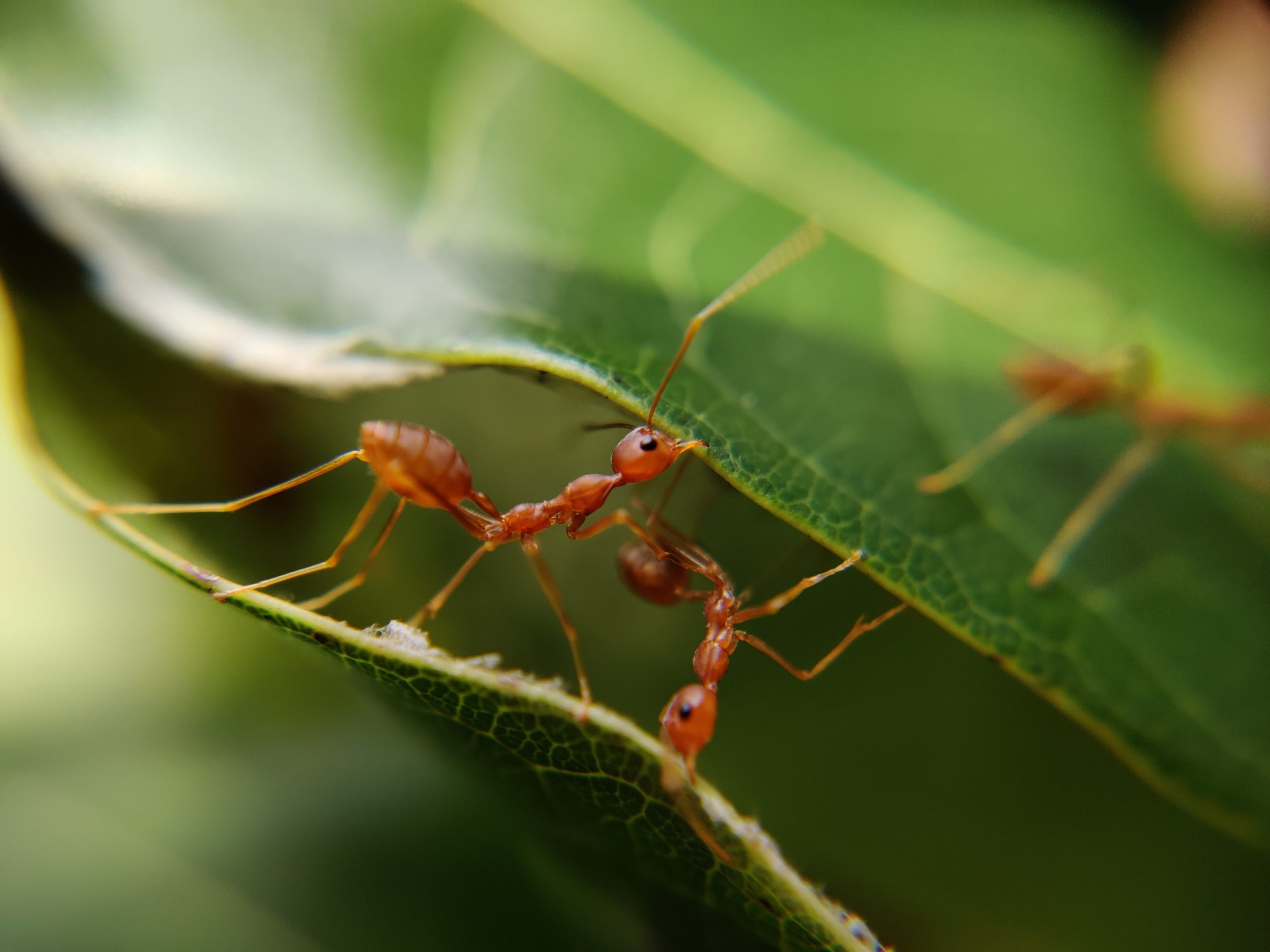

Seasonal Gardening
When Do Insects Come Out In Spring
Modified: January 22, 2024
Discover the best time for seasonal gardening with our guide on when insects come out in spring. Enhance your gardening experience and plan accordingly.
(Many of the links in this article redirect to a specific reviewed product. Your purchase of these products through affiliate links helps to generate commission for Chicagolandgardening.com, at no extra cost. Learn more)
Table of Contents
Introduction
Welcome to the magical world of seasonal gardening, where each season brings its own unique set of challenges and rewards. Spring, in particular, is a time of rejuvenation and growth, as nature awakens from its winter slumber. One of the most exciting aspects of spring gardening is the emergence of insects, which play a vital role in pollination and maintaining the balance of ecosystems.
As temperatures rise and daylight hours increase, plants begin to bloom, creating a colorful spectacle that attracts a wide variety of insects. These buzzing creatures, ranging from bees and butterflies to beetles and ladybugs, bring life and activity to our gardens.
Understanding when insects come out in spring is crucial for gardeners. It not only helps us anticipate their arrival, but also enables us to take necessary measures to protect our plants from potential pests or pests that can have a negative impact on our gardens.
In this article, we will explore the signs of spring, the factors that influence insect activity, common spring insects, their life cycles, behaviors and patterns, and the importance of these insects in ecosystems. We will also provide tips on how to attract beneficial spring insects to your garden, allowing you to create a thriving and sustainable gardening environment.
So, let us embark on this journey together and delve into the fascinating world of spring insects, uncovering their secrets and discovering how they contribute to the beauty and vitality of our gardens.
Signs of Spring
After months of cold and dreary weather, the signs of spring bring a much-needed sense of hope and renewal. As the days grow longer and the temperatures slowly rise, nature begins to come alive once again. Here are some key signs that signify the arrival of spring:
Blooming Flowers: One of the most obvious signs of spring is the burst of colorful blooms. The once barren landscapes are transformed into a dazzling array of vibrant hues as flowers such as daffodils, tulips, and cherry blossoms make their appearance.
Warmer Temperatures: As the grip of winter loosens its hold, temperatures gradually start to rise. Crisp mornings give way to milder afternoons, and the feeling of warmth in the air becomes more prominent, beckoning both humans and insects to emerge from their hibernation.
Chirping Birds: The sweet melodies of birds chirping fill the air as they return from their winter migrations. Their songs serve as a joyful soundtrack to the arrival of spring and add to the overall sense of rejuvenation.
Emerging Leaves: The barren branches of trees and shrubs begin to sprout fresh green leaves, indicating the renewal of life in the plant kingdom. This foliage provides shelter, food, and nesting opportunities for insects, attracting them to these new habitats.
Increased Daylight: Longer daylight hours are a clear indication that spring is here. The additional sunlight triggers various biological processes in plants and animals, including the awakening of insects from their dormant state.
Change in Wildlife Activity: Spring brings about a noticeable shift in wildlife behavior. Squirrels, rabbits, and other animals become more active as they forage for food and prepare for mating season. This increase in activity also impacts insect populations as they become targets for predators searching for sustenance.
These signs of spring serve as nature’s invitation to insects, signaling them to emerge from their hiding places and embark on their seasonal activities. As gardeners, being aware of these signs allows us to prepare our gardens and embrace the arrival of these fascinating creatures.
Factors That Influence Insect Activity
Insects are highly sensitive creatures whose activity is influenced by various factors. Understanding these factors can help us predict and manage insect populations in our gardens. Here are some key factors that impact insect activity:
Temperature: Temperature plays a significant role in insect emergence and activity. Most insects are cold-blooded, meaning their body temperature is regulated by the surrounding environment. As temperatures rise in spring, insects become more active, searching for food, mates, and suitable nesting sites.
Day Length: The length of daylight influences insect behavior and biological processes. Many insects rely on daylight cues to regulate their life cycles, such as mating, egg-laying, and hibernation. Increasing daylight hours in spring trigger the activation of certain genes in insects, prompting them to emerge from diapause and engage in their seasonal activities.
Plant Phenology: Phenology refers to the timing of recurring biological events in relation to climate and environmental factors. Insects depend on specific plants for food and shelter, and their emergence coincides with the phenological stages of these plants. For example, certain pollinators rely on the blooming of specific flowers for nectar and pollen, and their activity peaks when these plants are in full bloom.
Mating and Reproduction: Insects need to find mates to reproduce, and their activity is often driven by the need to locate suitable partners. Spring is the prime mating season for many insect species as they take advantage of the favorable conditions and abundant resources available.
Food Availability: Insects have specific dietary needs, whether they are herbivorous, carnivorous, or omnivorous. The availability of their preferred food sources influences their activity. As plants start producing new growth and flowering in spring, it provides a rich food source for herbivorous insects, attracting them to gardens and landscapes.
Environmental Conditions: Insects are greatly influenced by environmental conditions such as humidity, wind, and rainfall. Some insects, like butterflies, require certain humidity levels for successful reproduction and survival. Others rely on wind currents for dispersal to new habitats. Dry or wet conditions can also impact insect populations, either by limiting their activity or providing favorable conditions for certain species.
By understanding these factors, gardeners can make informed decisions about pest control measures, plant selection, and creating a favorable environment for beneficial insects. By working with the natural rhythms and needs of insects, we can foster a harmonious and thriving ecosystem in our gardens.
Common Spring Insects
Spring is a bustling time for insect activity, with a wide variety of fascinating creatures making their appearance in gardens and outdoor spaces. Here are some common spring insects you may encounter:
Bees: Bees are essential pollinators and play a crucial role in plant reproduction. They are attracted to flowers for their nectar and pollen. Look out for honeybees, bumblebees, and solitary bees buzzing around your garden, collecting precious resources to sustain their colonies.
Butterflies: These delicate and beautiful insects bring a touch of enchantment to any garden. Species like the Monarch butterfly and Painted Lady butterfly are known for their annual migrations and can be observed as they pass through during their spring journey en route to their summer breeding grounds.
Ladybugs: Ladybugs, also known as ladybirds, are beloved by gardeners for their appetite for aphids, mealybugs, and other garden pests. They can be easily identified by their round shape and bright red or orange with black spots coloring.
Dragonflies and Damselflies: With their iridescent wings and agile flight, dragonflies and damselflies are captivating insects. These predatory insects feed on mosquitoes and other small insects, making them valuable allies in controlling pest populations.
Ants: Ants are highly social insects that can be found foraging for food in spring. While some ants may cause minor garden nuisances, they also play important roles in aerating the soil and breaking down organic matter.
Caterpillars: Spring is a time of immense caterpillar activity as these larvae emerge from eggs and begin feeding on plants. Species like the Eastern tent caterpillar and the cabbage white caterpillar can be commonly found in gardens.
Ground Beetles: Ground beetles are beneficial insects that feed on garden pests, such as slugs, snails, and cutworms. Their dark coloration and rugged appearance make them easy to spot as they scuttle across the ground.
Mosquitoes: While not particularly welcome, mosquitoes are a common presence in spring. Their populations surge as temperatures rise and water sources become available for breeding. Taking measures to eliminate standing water can help reduce their numbers.
Spiders: Although not insects, spiders play an important role in controlling insect populations. Their intricate webs and predatory nature make them fascinating garden dwellers, helping to maintain a balance of insect populations.
Fireflies: These enchanting insects, also known as lightning bugs, are a sight to behold during warm spring evenings. Their bioluminescent glow adds a touch of magic to gardens, as they use their light signals to attract mates.
These are just a few examples of the diverse insect life that emerges in spring. Each insect plays a unique role in the ecosystem and contributes to the overall health and balance of the natural world. Welcoming these insects to your garden can create a thriving and biodiverse environment.
Life Cycles of Spring Insects
Spring is a time of renewal and growth for insects, as they go through their intricate life cycles. Understanding these life cycles can provide valuable insights into the behavior and activity of spring insects. Here are the general stages of the life cycles of common spring insects:
Egg Stage: Insects typically start their life as eggs, which are laid by adult females. The location and method of egg deposition vary among species. Some insects lay their eggs on plants, while others may lay them in soil or water. The duration of the egg stage depends on factors such as temperature and species.
Larval Stage: After hatching from the eggs, insects enter the larval stage. Larvae undergo a period of rapid growth, feeding voraciously to build up their energy reserves. This is the stage where caterpillars, grubs, and maggots are commonly observed. They may molt several times as they grow, shedding their exoskeletons and revealing a larger size underneath.
Pupal Stage: The pupal stage is a period of transformation and development. In this stage, the insect undergoes metamorphosis, during which it transforms from a larva into its adult form. Inside the pupal casing, the insect’s body undergoes dramatic changes, including the development of wings, reproductive organs, and other adult characteristics.
Adult Stage: The adult stage is the final stage of an insect’s life cycle. Once the transformation is complete, the insect emerges from the pupal casing as a fully formed adult. Adult insects are sexually mature and capable of reproduction. This is the stage where insects engage in mating, foraging for food, and, in the case of pollinators, transferring pollen from one flower to another.
It’s important to note that the duration of each life cycle stage can vary significantly among different species of insects. Some species may complete their life cycle within a few weeks, while others may take several months or even years.
Understanding the life cycles of spring insects allows us to anticipate their presence in our gardens and take appropriate measures if necessary. It is also a reminder of the intricate and diverse world of insects, where each stage of their life cycle contributes to the overall balance and vitality of ecosystems.
Behaviors and Patterns of Spring Insects
Spring brings a flurry of activity among insects as they engage in various behaviors and follow distinct patterns. Understanding these behaviors and patterns can provide valuable insights into the lives of spring insects. Here are some common behaviors and patterns exhibited by these fascinating creatures:
Mating: Spring is a prime time for insect mating. Male insects employ various strategies to attract females, including releasing pheromones, performing intricate courtship rituals, or displaying vibrant colors. Mating typically occurs on or near plants, where both males and females can find suitable food sources.
Foraging: As the weather warms, insects emerge from hibernation or diapause in search of food. Many spring insects are herbivores that rely on the fresh growth of plants for sustenance. They feed on leaves, nectar, pollen, or sap, ensuring their energy needs are met for mating and reproduction.
Pollination: Spring is a critical time for pollinators, such as bees, butterflies, and some beetles. As they visit flowers in search of nectar, they inadvertently transfer pollen from one flower to another, promoting plant reproduction. This mutualistic relationship between insects and plants is essential for the production of fruits and seeds.
Dispersal: Some spring insects engage in dispersal behaviors to find new habitats or expand their range. This can involve flying to new areas, using wind currents to carry them, or hitching a ride on larger animals or objects. Dispersal allows insects to colonize new territories and maintain genetic diversity.
Camouflage and Mimicry: Insects have developed remarkable camouflage and mimicry techniques to blend in with their surroundings or imitate other organisms. This behavior helps them avoid predators or gain an advantage when hunting prey. Examples include stick insects blending in with twigs or butterflies mimicking toxic species for protection.
Seasonal Migration: While not all insects migrate, some species undertake seasonal journeys to find more favorable conditions for mating and breeding. This is particularly evident in migratory butterflies, such as the Monarch butterfly, which travels hundreds or even thousands of miles during spring and fall migrations, navigating by using celestial clues.
Nocturnal Activity: Many spring insects, such as moths and certain beetles, are primarily active during the night. They are attracted to artificial light sources and may be observed fluttering around outdoor lights or resting on surfaces during the day. Nocturnal insects play important roles in pollination and decomposition.
These behaviors and patterns highlight the complexity and diversity of spring insects. Each behavior serves a specific purpose in their quest for survival, reproduction, and contributing to the overall balance of ecosystems. By observing and understanding these behaviors, we can gain a deeper appreciation for the intricate lives of these remarkable creatures.
Importance of Spring Insects in Ecosystems
Spring insects play a crucial role in maintaining the health and balance of ecosystems. Their presence and activities have far-reaching impacts on plants, other animals, and the overall functioning of natural systems. Here are some reasons why spring insects are important:
Pollination: Many spring insects, including bees, butterflies, and other pollinators, are essential for the pollination of flowering plants. Through their foraging behavior, insects inadvertently transfer pollen from one flower to another, enabling the fertilization and production of fruits, vegetables, and seeds. This process is fundamental for plant reproduction and the maintenance of biodiversity.
Food Web: Insects are a vital source of food for a wide variety of animals, including birds, reptiles, amphibians, and mammals. As insects emerge in spring and become more abundant, they provide a crucial food resource for these animals, supporting their growth, reproduction, and survival. Without insects, many other species would struggle to find enough food to sustain their populations.
Ecological Services: Spring insects provide important ecological services that help regulate ecosystems. For example, predatory insects, like ladybugs and lacewings, help control the populations of pests by feeding on them. This natural pest control reduces the need for chemical pesticides and promotes a more sustainable approach to gardening and agriculture.
Decomposition and Nutrient Cycling: Insects, such as beetles and flies, play an integral role in the decomposition process. They break down organic matter, such as dead plants and animals, and contribute to nutrient cycling in the soil. By aiding in the decomposition process, insects help release nutrients that can be used by plants, promoting healthy growth and ecosystem resilience.
Seed Dispersal: Some spring insects assist in seed dispersal by feeding on fruits or seeds and then depositing them in different locations. This helps plants expand their range and establish new populations in diverse habitats. Insects that engage in seed dispersal contribute to the overall dispersal and distribution of plant species, promoting genetic diversity and increasing ecosystem resilience.
Indicators of Environmental Health: The presence and abundance of certain spring insects can serve as indicators of environmental health. For example, the decline in bee populations has raised concerns about the impacts on pollination and the overall health of ecosystems. Monitoring the population trends and diversity of spring insects can provide valuable insights into the wellbeing and integrity of habitats and ecosystems.
Spring insects are invaluable components of ecosystems, performing essential roles such as pollination, pest control, nutrient recycling, and seed dispersal. Recognizing their importance highlights the interconnectedness of all living organisms and emphasizes the need to protect and conserve these vital insect populations for the benefit of both nature and human well-being.
How to Attract Beneficial Spring Insects to Your Garden
Attracting beneficial spring insects to your garden can help create a thriving and sustainable ecosystem. These insects provide valuable services, such as pollination and pest control, and contribute to the overall health and balance of your garden. Here are some tips to attract beneficial spring insects:
Plant Native Flowers and Herbs: Native plants are well-adapted to the local environment and attract a diverse range of insects. Choose a variety of flowering plants and herbs that bloom in spring to provide a continuous source of nectar and pollen. Examples include lavender, coneflowers, sunflowers, and bee balm. Plant them in clusters to make it easier for insects to find them.
Provide Shelter and Nesting Sites: Create habitat diversity by incorporating a variety of plant structures, such as trees, shrubs, and grasses, in your garden. These provide shelter and nesting sites for insects. Leave some areas of undisturbed soil or mulch for ground-nesting bees and other insects that require bare soil for nesting.
Install Insect-Friendly Features: Consider adding features to your garden specifically designed to attract beneficial insects. For example, a shallow water source with rocks or pebbles can provide a drinking spot for butterflies and beneficial insects. Installing bee houses or creating small piles of logs and twigs can provide nesting opportunities for solitary bees and other insects.
Avoid Pesticide Use: Minimize or eliminate the use of pesticides in your garden, as they can harm both pests and beneficial insects. Instead, encourage natural pest control by creating a balanced ecosystem. Beneficial insects, such as ladybugs and lacewings, will help control pest populations. If pest control is necessary, opt for organic and targeted methods to minimize harm to beneficial insects.
Plant for Different Bloom Times: Choose a variety of plants that bloom at different times throughout spring to provide a continuous food source for insects. This ensures that there is a consistent supply of nectar and pollen available, attracting and supporting a diverse range of beneficial insects. Research the bloom times of different plants and plan your garden accordingly.
Reduce Artificial Light at Night: Many beneficial insects, such as moths, are negatively impacted by artificial light at night. Minimize outdoor lighting or use motion-activated or low-intensity lights to reduce their disturbance. This helps nocturnal insects carry out their natural behaviors without interference.
Practice Sustainable Gardening: Adopt sustainable gardening practices, such as composting, conserving water, and using organic fertilizers. These practices promote soil health, reduce chemical pollutants, and support a balanced ecosystem, benefiting both plants and beneficial insects.
By following these tips, you can create an inviting and welcoming environment for beneficial spring insects in your garden. As these insects become regular visitors, you’ll witness the positive impact they have on your plants and the overall vitality of your garden.
Conclusion
Spring gardening is a magical time filled with the emergence of insects and the vibrant energy of new life. The signs of spring, from blooming flowers to chirping birds, are a clear indication that the world is awakening from its winter slumber. Understanding the factors that influence insect activity, the common spring insects, their life cycles, behaviors, and the importance they hold in ecosystems allows us to appreciate the dynamic and interconnected web of life in our gardens.
By attracting beneficial spring insects to our gardens, we create a harmonious and sustainable environment. Planting native flowers and herbs, providing shelter and nesting sites, and avoiding the use of pesticides are all steps that can be taken to encourage the presence of these valuable insects. Their role in pollination, pest control, nutrient cycling, and seed dispersal is vital for the health and balance of our gardens and the larger ecosystem.
As gardeners, we have the opportunity to foster a deep connection and understanding of the intricate lives of spring insects. We can observe their behaviors, marvel at their adaptations, and recognize their importance in maintaining the beauty and diversity of our natural world.
So, as you embark on your seasonal gardening journey, embrace the buzzing and fluttering creatures that grace your garden. Appreciate the delicate dance between plants and insects, and strive to create a nurturing environment that supports the flourishing of beneficial spring insects. Together, we can cultivate a thriving garden that serves as a haven for these incredible creatures, allowing us to coexist and thrive alongside them in our shared natural spaces.
